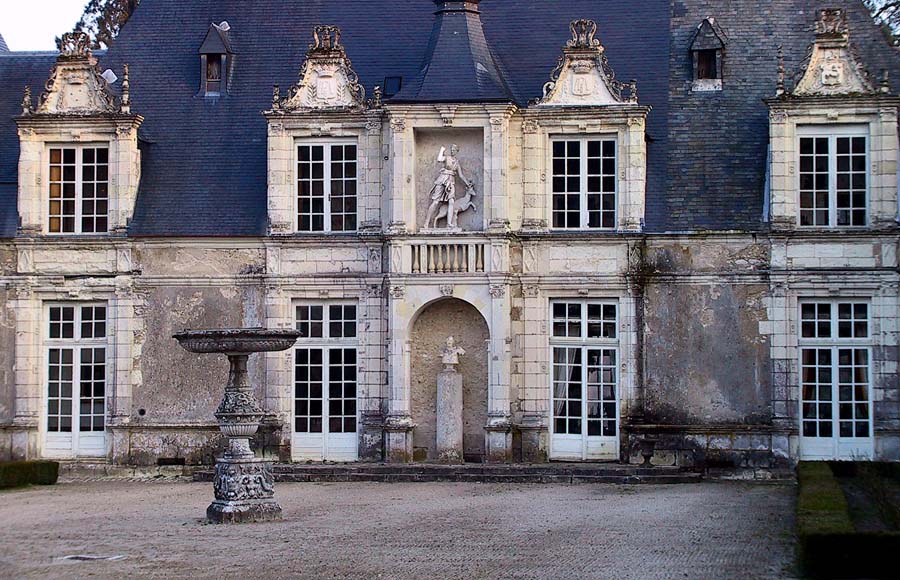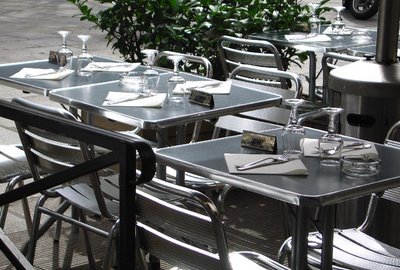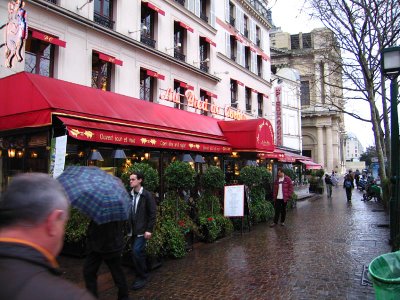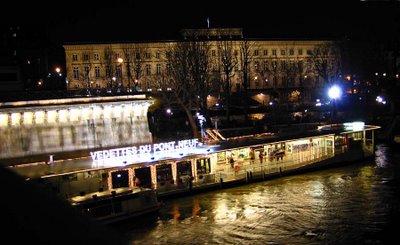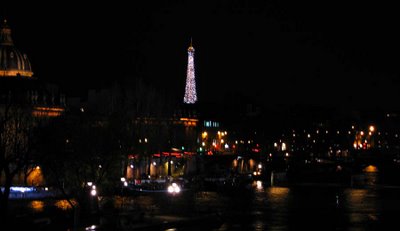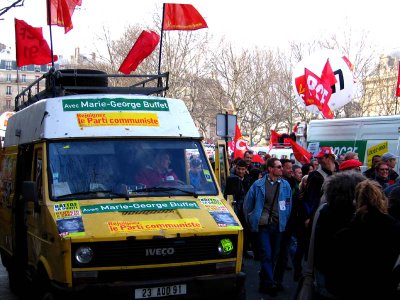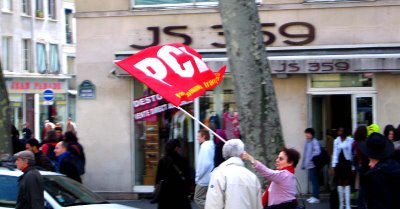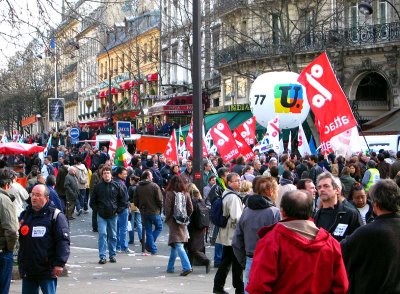We took a guided tour so that we could see the interior of the château as well as the grounds. The guide, a woman in her 50s who had obviously spent a lot of time on and around the property, was informative and funny. You got the impression that she has known the owners of the château for a long time. The tour was in French — I don't know if English-language tours are given.
The guide said that when the current owners inherited Villesavin 25 years ago, it was in a sorry state of repair. It had been abandoned for decades, and the woods had grown up right to the walls of the building on all sides. The place was inaccessible and was falling down. The owners, recently married, moved into two rooms dating from the 16th century, heated them with wood fires in a big fireplace, and cooked in the fireplace too. They cleared the land and opened the place up for tours to bring in a little money for further restoration work. He sold tickets at the gate, and she guided visitors around the property and showed them the two rooms that they lived in.
Our guide last month regaled us with stories about how different building materials and decorative elements at Villesavin had probably been siphoned off from the Chambord construction project, which ran from 1525 until 1540 or so.
The fountain in the main courtyard at Villesavin, for example, is a masterpiece of Renaissance sculpture that was probably intended to stand at Chambord but somehow ended up at the superintendent's home. The fountain is classified by the French government as a historical monument, and under that status the owners are not allowed to modify it in any way, the guide said. They can't even clean off the lichens and fungi that grow on the marble. Government inspectors turn up unannounced from time to time to make sure the fountain hasn't been cleaned.
The guide said that the owners of the château have done and are still doing major parts of the restoration of the building themselves, one room at a time.
 A bust of king François Ier graces a wall in the Villesavin courtyard.
A bust of king François Ier graces a wall in the Villesavin courtyard.François built Chambord and, whether he knew it or not, Villesavin too.
On the west end of the château building there is a fine interior courtyard which is more barnyard than formal garden. A huge shade tree stands in the middle.
 Inside the side courtyard. You can see the porch that provides access
Inside the side courtyard. You can see the porch that provides accessto the 16th century rooms the owners used to live in
The 16th century rooms were the most interesting part of the building, I thought. There was a gigantic fireplace for heat and cooking. Skins of wild boars — very old, according to the guide — served as throw rugs. The rest of the rooms we saw were done in 18th century style. They reminded me of rooms I've seen in the White House in Washington DC. Only a small part of the château — the owners' private apartments — is heated even to this day, so we shivered through much of the tour.
Another major feature at Villesavin is a very old dovecote (pigeonnier or colombier in French) where doves were housed. There are 1500 pigeonholes in the walls of the building, which is a big round tower. A revolving ladder mounted on a central axis let workers climb up and reach into the pigeonholes to gather eggs and chicks, which were used as food.
If you come to the Loire Valley and go to see Chambord, I recommend a side trip to Villesavin, which is nearby.



